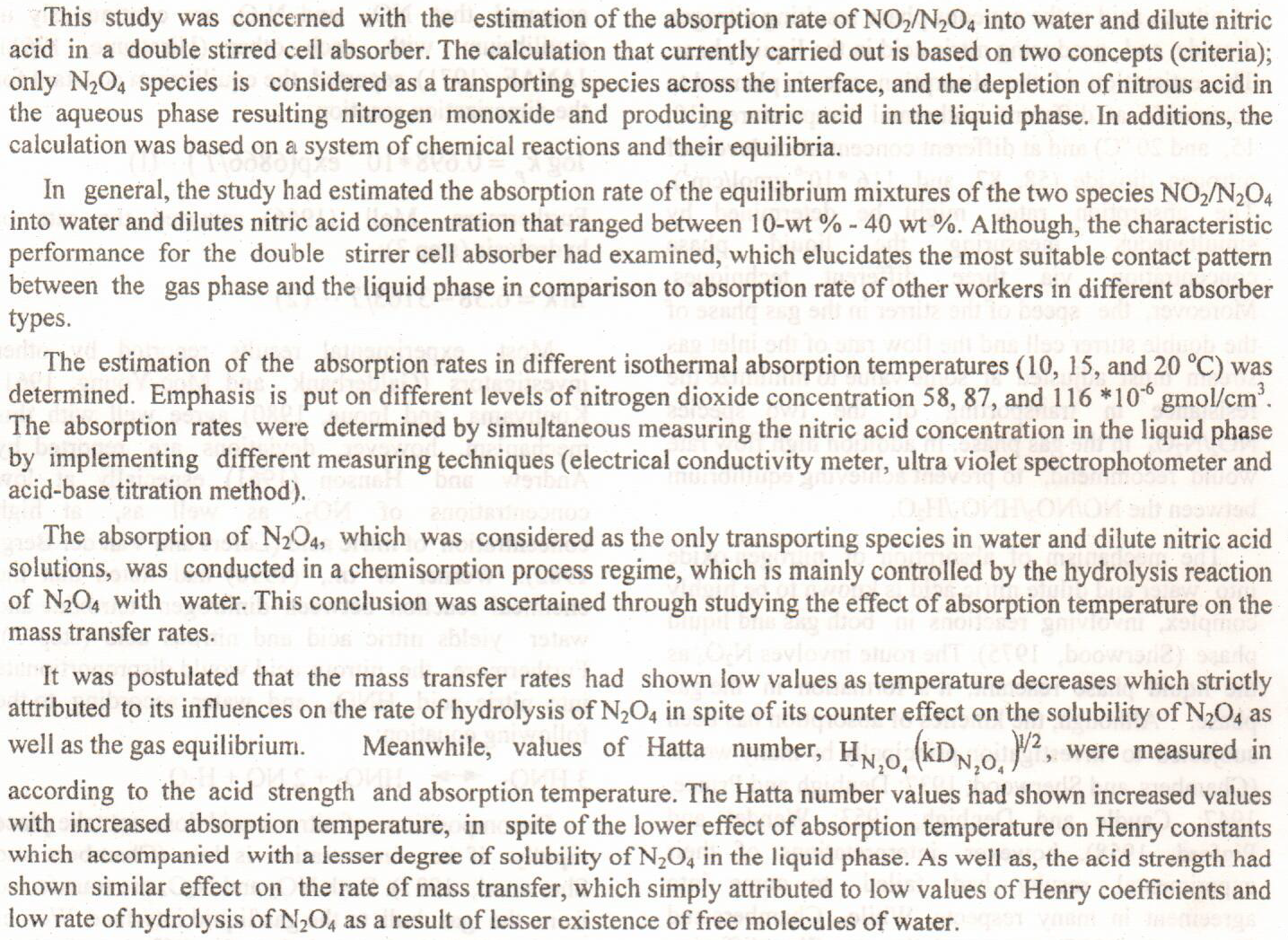
 (20)
(20)
 (15)
(15)
 (30)
(30)
Cement-based adhesive (CBA) is used as a bonding agent in Carbon Fibre Reinforced Polymer (CFRP) applications as an alternative to epoxy-based adhesive due to the drawbacks of the epoxy system under severe service conditions which negatively affect the bond between the CFRP and strengthened elements. This paper reports the results of, an investigation carried out to develop two types of CBA using magnetized water (MW) for mixing and curing. Two magnetic devices (MD-I and MD-II), with different magnetic field strengths (9000 and 6000 Gauss) respectively, were employed for water magnetization. Different water flows with different water circulation times in the magnetizer were used for each device. Compressive and splitting tensile strength te
... Show More (11)
(11)
 (10)
(10)
Air stripping for removal of Trichloroethylene (TCE), Chloroform (CF) and Dichloromethane (DCM) from water were studied in a bubble column (0.073 m inside dia. and 1.08 m height with several sampling ports). The contaminated water was prepared from deionized water and VOCs. The presence of VOCs in feed solution was single, binary or ternary components. They were diluted to the concentrations ranged between 50 mg/l to 250 mg/l. The experiments were carried out in batch experiments which regard the bubble column as stirred tank and only gas was bubbled through stationary liquid. In this case transient measurements of VOC concentration in the liquid phase and the measured concentra
... Show MoreIn this work, a method for the simultaneous spectrophotometric determination of zinc which was precipitated into deionized water that is in a commercial distribution systems PVC pipe, is proposed using UV-VIS Spectrophotometer. The method based on the reaction between the analytes Zn2+ and 2-carboxy-2-hyroxy-5-sulfoformazylbenze (Zincon) at an absorption maximum of 620nm at pH 9-10. This ligand is selective reagent. Since the complex is colored (blue), its stoichiometry can be established using visible spectrometry to measure the absorbance of solutions of known composition. The stoichiometry of the complex was determined by Job’s method and molar ratio method and found to be 1:2 (M: L). A series of synthetic solution containing different
... Show MoreThis research has presented a solution to the problem faced by alloys: the corrosion problem, by reducing corrosion and enhancing protection by using an inhibitor (Schiff base). The inhibitor (Schiff base) was synthesized by reacting of the substrates materials (4-dimethylaminobenzaldehyde and 4-aminoantipyrine). It was diagnosed by infrared technology IR, where the IR spectrum and through the visible beams proved that the Schiff base was well formed and with high purity. The corrosion behavior of carbon steel and stainless steel in a saline medium (artificial seawater 3.5%NaCl) before and after using the inhibitor at four temperatures: 20, 30, 40, and 50 C° was studied by using thr
... Show MoreThis research has presented a solution to the problem faced by alloys: the corrosion problem, by reducing corrosion and enhancing protection by using an inhibitor (Schiff base). The inhibitor (Schiff base) was synthesized by reacting of the substrates materials (4-dimethylaminobenzaldehyde and 4-aminoantipyrine). It was diagnosed by infrared technology IR, where the IR spectrum and through the visible beams proved that the Schiff base was well formed and with high purity. The corrosion behavior of carbon steel and stainless steel in a saline medium (artificial seawater 3.5%NaCl) before and after using the inhibitor at four temperatures: 20, 30, 40, and 50 C° was studied by using three electrodes potentiostat. The corrosion behavior was
... Show More (12)
(12)
 (3)
(3)
This research has presented a solution to the problem faced by alloys: the corrosion problem, by reducing corrosion and enhancing protection by using an inhibitor (Schiff base). The inhibitor (Schiff base) was synthesized by reacting of the substrates materials (4-dimethylaminobenzaldehyde and 4-aminoantipyrine). It was diagnosed by infrared technology IR, where the IR spectrum and through the visible beams proved that the Schiff base was well formed and with high purity. The corrosion behavior of carbon steel and stainless steel in a saline medium (artificial seawater 3.5%NaCl) before and after using the inhibitor at four temperatures: 20, 30, 40, and 50 C° was studied by using three electrodes potentiostat. The corrosion behavior
... Show More (12)
(12)
 (3)
(3)
A mercury porosimeter has been used to measure the intrusion volume of the three types mercury positive lead acid-battery plates. The intrusion volumes were used to calculate the pore diameter, pore volume, pore area, and pore size distribution. The variation of the pore area in positive lead acid-battery plates as well as of the pore volume has the following sequence. Paste positive > Uncured positive > Cured positive

